Computational and Experimental Substantiation of Strengthening Reinforced Concrete Structures with Composite Materials of Power Plants under Seismic Action
Abstract
:1. Introduction
- The reuse of polymer waste mix (PM) as fillers in calcium silicate to prepare new composites of environmentally friendly polymer concrete;
- The recycling of plastic waste in the proposed low-energy dicalcium silicate cement to give improved environmentally friendly composites after converting CO2 gas to carbonates, with a reduced carbon footprint;
- The reuse of plastic waste as aggregate or fiber in cement mortar and concrete manufacturing. The article reviewed the three most significant features of concrete: fresh properties, mechanical strength, and durability;
- The effect of the quantity of the two main components of fly ash, CaO and SiO2, on the compressive strength of concrete modified with different fly ash contents for various mix proportions.
- The results of experimental studies of fiber-reinforced recycled aggregate concrete (FRAC) by adding steel fiber (SF) and polypropylene fiber (PPF) into the RAC matrix. The residual strains under cyclic compression in low-cycle tests with increasing strain amplitude were determined. A predictive model of FRAC behavior, taking into account the content of steel and PPF fibers in concrete, was also developed;
- The results of cyclic compression tests of SF-reinforced natural aggregate concrete (SF-R-NAC), SF-reinforced RAC (SF-R-RAC), and PPF-reinforced RAC (PPF-R-RAC) with different contents of steel and polypropylene fibers. The pattern of residual strain development was investigated, a relationship between residual strain and unloading strain was proposed, and a modified model of the stress–strain relationship of concrete was developed. A new hysteretic viscous damping model represented by residual strain was proposed, accounting for the fiber content.
- Fiberglass reinforcement of columns.
- Arrangement of steel cantilevers in the middle span of all floors of a frame.
- Construction of an additional concrete shear wall.
- Metal products with a high load-bearing capacity that require substantial capital investments and labor-intensive work;
- Fiberglass materials that are affected by the alkaline environment of concrete during long-term operation;
- Carbon composite CFRP products.
2. Materials and Methods
- Determination of the actual seismicity of the area where the facilities were located, based on the current regulatory and technical documentation and microseismic monitoring data;
- Determination of the seismic events with an occurrence of once every 500, 1000, and 5000 years;
- Development of spatial mathematical models of TPPs and HPPs;
- Comprehensive surveys of structures in order to determine the actual strength parameters of concrete as well as the actual reinforcement data of the structures;
- Complex calculation studies (ANSYS) taking into account the nonlinear behavior of materials and acting loads;
- Identification of the most loaded typical elements of HPPs and TPPs;
- Development of the physical models;
- Experimental investigations of a reinforced concrete frame structure without strengthening under a seismic impact bringing it to failure;
- Determination of the required composite external strengthening for the earthquake resistance of structures;
- Experimental investigations of the seismic action of a reinforced concrete frame structure strengthened with composite materials “after earthquake”;
- Experimental investigations of a reinforced concrete frame structure initially strengthened with composite materials under seismic action.
- MTS-brand hydraulic cylinders (Figure 3), designed to create alternating dynamic action with different acceleration at each stage of loading from 0.2 m/s2 to 4 m/s2, with a frequency from 1 to 50 Hz, displacement amplitude from ±50 to ±250 mm, and maximum force at alternating dynamic action of ±800 kN. The rod displacement was monitored using an LVDT-type displacement sensor. The amplitude–frequency characteristic is presented in Figure 4.
- Measuring equipment:
- FLA and PFL strain gauges were designed to determine relative strains at characteristic points of the structural elements. The grid was made of copper–nickel alloy foil and the substrate was made of an epoxy composition.
- PCB 352C04 general-purpose single-component accelerometers with integrated ICP electronics.
- NI PXIe-1082 hardware suite with NI PXI-4496 (for accelerometer data logging) and NI PXIe-4330 (for strain gauge data logging and recording) modules.
- MTS Flex Test 60 Digital Controller, designed to control dynamic hydraulic cylinders with the ability to monitor and change the parameters of their operation in the process of testing.
- Compressive strength of concrete of class B35:
- The first group of limit states: Rb = 19.5 MPa;
- The second group of limit states: Rbn = 25.5 MPa.
- Tensile strength of concrete of class B35:
- The first group of limit states: Rbt = 1.30 MPa;
- The second group of limit states Rbtn = 1.95 MPa.
- Modulus of deformation of concrete class B35: Eb = 34,500 MPa.
- Poisson’s ratio of concrete of class B35: γ = 0.2.
- Resistance of reinforcement of class AIII:
- The first group of limit states: Rs = 365 MPa;
- The second group of limit states: Rsn = 390 MPa.
- Modulus of deformation of reinforcement of class AIII: Es = 200,000 MPa.
- (a)
- Nanotechnological Center of Composites Ltd., Moscow, Russia;
- (b)
- Jumatex JSC., Moscow, Russia.
- Surface density 600 g/m2;
- Tape thickness (monolayer) 0.333 mm;
- Fiber modulus of elasticity not less than 230 GPa;
- Tensile strength of the fiber is not less than 4900 MPa;
- The average value of the tensile strength of the tape over a monolayer is not less than 3600 MPa.
3. Results
3.1. Results of Computational Studies
3.2. Experimental Results
- With cracking “after the earthquake”, CFRP reinforcement in one layer in the area of the joint connection “wall (column)—floor slab (transom)”;
- Initially without cracking, CFRP reinforcement in three layers in the area of the joint connection “wall (column)—floor slab (transom)”.
- (1)
- Actual stresses σs = 140 MPa at design resistance of metal reinforcement Rs = 365 MPa, i.e., σs/Rs = 38.4% (Figure 27);
- (2)
- Actual σf = 380 MPa with the average tensile strength of composite tapes Rf = 3600 MPa, i.e., σf/Rf = 10.6% (Figure 27);
- (3)
- Actual σf = 290 MPa with σs/Rs = 79.5% and σf/Rf = 8.1% (Figure 29).
- Failure of the composite-strengthened reinforced concrete model with cracks “after the earthquake” occurred at a seismic impact of 80 kN, which was 1.33 times higher in comparison with the reinforced concrete model without CFRP reinforcement and corresponded to magnitude 8.1 MSK-64 (Figure 13).
- Crack formation in the initially composite-strengthened reinforced concrete model in the experiment occurred at a seismic impact of 38 kN, which was higher than that in the non-strengthened reinforced concrete model (25 kN).
- The initial composite-strengthened reinforced concrete model failed at a seismic impact of 115 kN, which was 1.9 times higher than the non-strengthened reinforced concrete model and corresponded to magnitude 9.5 MSK-64 (Figure 13).
- In the section along the wall (column) face, the stresses on the metal reinforcement of the reinforced concrete model without CFRP strengthening were greater than those on the reinforced concrete models strengthened with composite materials (Figure 26 and Figure 28), acting as a cage of the butt joint;
- In sections along the length of the slab (transom) at a distance of 0.87 h = 260 mm and 1.2 h = 360 mm (where “h” is the height) from the edge of the wall (column), the stresses on the metal reinforcement and composite reinforcement material were close enough, which meant that they worked together (Figure 27 and Figure 29);
- Stresses on the metal reinforcement of the reinforced concrete model without reinforcement with composite materials before the seismic impact corresponding to its destruction recorded by strain gauges had values lower than those on the concrete reinforced with composite materials (Figure 27 and Figure 29).Estimated calculations showed that the ratio of the cost of strengthening 1 m2 of a reinforced concrete structure with metal/CFRP is approximately equal to 1.6 (taking into account the cost of works directly on the site).
4. Conclusions
- The conducted calculation and experimental studies of reinforced concrete structures of thermal and hydroelectric power plants aimed at increasing their seismic resistance showed that due to long-term operation and increases in seismic activity, these structures require strengthening.
- In order to increase the seismic resistance of the structures, computational studies were carried out to estimate the parameters to be fixed during experimental studies. The main parameters were crack initiation, horizontal displacements, bearing capacity of reinforced concrete structure, stresses on metal reinforcement, and stresses on composite reinforcement material.
- Experimental studies showed that in the process of loading the model, there was an inclusion of composite external reinforcement and a redistribution of stresses from the metal reinforcement to the composite material along the length of the slab (transom) in the CFRP-strengthened reinforced concrete model, which increased the stiffness and load-bearing capacity of the structure and significantly increased its seismic resistance.
- The results of the computational–experimental study showed that cracking of the reinforced concrete structure without CFRP strengthening occurred under a seismic impact of magnitude 6.0 (MSK-64); destruction occurred at magnitude 7.5 (MSK-64). The strengthening of the structure with composite material increased its seismic resistance up to magnitude 9–10 (MSK-64).
- For practical application by design organizations at the stage of “reconstruction” to improve the seismic resistance of power plants, including after an earthquake, the dependence of the number of layers of composite material in the zone of the joint connection “wall (column)—slab (ledger)” on the acceleration under seismic impact is proposed in Figure 30, in accordance with the nature and parameters of CFRP strengthening, presented in Figure 25.
- Further computational–experimental studies will be aimed at a more detailed study of the influence of reinforcement schemes and materials on increasing the seismic resistance of structures.
5. Patents
Author Contributions
Funding
Data Availability Statement
Conflicts of Interest
References
- SP 14.13330.2018 Seismic building design code (OSR-2015) Moscow. 2018; 1–125. (In Russian)
- SNiP II-7-81* Seismic building design code (OSR-97) Moscow. 1981; 1–60. (In Russian)
- Abdelsattar, D.E.; El-Demerdash, S.H.; Zaki, E.G.; Dhmees, A.S.; Azab, M.A.; Elsaeed, S.M.; Kandil, U.F.; Naguib, H.M. Effect of Polymer Waste Mix Filler on Polymer Concrete Composites. ACS Omega 2023, 8, 39730–39738. [Google Scholar] [CrossRef] [PubMed]
- Naguib, H.M.; Zaki, E.G.; Abdelsattar, D.E.; Dhmees, A.S.; Azab, M.A.; Elsaeed, S.M.; Kandil, U.F. Environmentally Friendly Polymer Concrete: Polymer Treatment, Processing, and Investigating Carbon Footprint with Climate Change. ACS Omega 2023, 8, 8804–8814. [Google Scholar] [CrossRef] [PubMed]
- Ahmad, J.; Majdi, A.; Babeker Elhag, A.; Deifalla, A.F.; Soomro, M.; Isleem, H.F.; Qaidi, S. A Step towards Sustainable Concrete with Substitution of Plastic Waste in Concrete: Overview on Mechanical, Durability and Microstructure Analysis. Crystals 2022, 12, 944. [Google Scholar] [CrossRef]
- Jaf, D.K.I.; Abdulrahman, P.I.; Mohammed, A.S.; Kurda, R.; Qaidi, S.M.A.; Asteris, P.G. Machine learning techniques and multi-scale models to evaluate the impact of silicon dioxide (SiO2) and calcium oxide (CaO) in fly ash on the compressive strength of green concrete. Constr. Build. Mater. 2023, 400, 132604. [Google Scholar] [CrossRef]
- Wang, C.; Xiao, J.; Liu, W.; Ma, Z. Unloading and reloading stress-strain relationship of recycled aggregate concrete reinforced with steel/polypropylene fibers under uniaxial low-cycle loadings. Cem. Concr. Compos. 2022, 131, 104597. [Google Scholar] [CrossRef]
- Wang, C.; Wu, H.; Li, C. Hysteresis and damping properties of steel and polypropylene fiber reinforced recycled aggregate concrete under uniaxial low-cycle loadings. Constr. Build. Mater. 2022, 319, 126191. [Google Scholar] [CrossRef]
- Samarakoon, S.M.S.M.K.; Piatek, B.; De Silva, G.H.M.J.S. Investigation of the Flexural Behavior of Preloaded and Pre-Cracked Reinforced Concrete Beams Strengthened with CFRP Plates. Materials 2023, 16, 22. [Google Scholar] [CrossRef] [PubMed]
- Rubin, O.D.; Lisichkin, S.E.; Frolov, K.E. Results of experimental studies of reinforced concrete structures of hydraulic engineering structures reinforced with carbon tapes under the action of bending moment. Stroit. Mech. Eng. Struct. Constr. 2016, 6, 58–63. (In Russian) [Google Scholar]
- Rubin, O.D.; Antonov, A.S.; Lisichkin, S.E.; Frolov, K.E.; Lisichkin, A.S. Justification of the solution for reinforcement of reinforced concrete structures after short-term impact loads, by the example of HPP Ayurikin. Constr. Sci. Educ. 2019, 9, 1–6. (In Russian) [Google Scholar]
- Uz, M.E.; Guner, Y.; Avci, E. Strengthening of Reinforced Concrete Beams via CFRP Orientation. Buildings 2024, 14, 82. [Google Scholar] [CrossRef]
- Wang, H.; Li, C.; Song, S.; Wang, Y.; Meng, Q.; Li, F. Flexural Performance of Cracked Reinforced Concrete Beams Strengthened with Prestressed CFRP Sheets under Repeated Loads. Buildings 2023, 13, 2115. [Google Scholar] [CrossRef]
- Al-Khreisat, A.; Abdel-Jaber, M.; Ashteyat, A. Shear Strengthening and Repairing of Reinforced Concrete Deep Beams Damaged by Heat Using NSM-CFRP Ropes. Fibers 2023, 11, 35. [Google Scholar] [CrossRef]
- Koutas, L.; Bousias, S.; Triantafillou, T. Seismic strengthening of masonry-infilled RC frames with TRM: Experimental study. J. Compos. Constr. 2015, 19, 04014048. [Google Scholar] [CrossRef]
- Facconi, L.; Minelli, F.; Giuriani, E. Response of infilled RC frames retrofitted with a cementitious fiber-mesh reinforced coating in moderate seismicity areas. Constr. Build. Mater. 2018, 160, 574–587. [Google Scholar] [CrossRef]
- Matteis, G.; Formisano, A.; Mazzolani, F. An innovative methodology for seismic retrofitting of existing RC buildings by metal shear panels. Earthq. Eng. Struct. Dyn. 2009, 38, 69–78. [Google Scholar] [CrossRef]
- Cao, X.-Y.; Wu, G.; Ju, J.-W.W. Seismic performance improvement of existing RCFs using external PT-PBSPC frame sub-structures: Experimental verification and numerical investigation. J. Build. Eng. 2022, 46, 103649. [Google Scholar] [CrossRef]
- Valente, M.; Milani, G. Alternative retrofitting strategies to prevent the failure of an under designed reinforced concrete frame. Eng. Fail. Anal. 2018, 89, 271–285. [Google Scholar] [CrossRef]
- Valente, M.; Milani, G. An under-designed RC frame: Seismic assessment through displacement based approach and possible refurbishment with FRP strips and RC jacketing. AIP Conf. Proc. 2017, 1863, 450018. [Google Scholar]
- Hu, B.; Lv, H.-L.; Kundu, T. Experimental study on seismic behavior of reinforced concrete frames in primary and middle schools with different strengthening methods. Constr. Build. Mater. 2019, 217, 473–486. [Google Scholar] [CrossRef]
- Ye, L.P.; Zhang, K.; Zhao, S.H.; Feng, P. Experimental study on seismic strengthening of RC columns with wrapped CFRP sheets. Constr. Build. Mater. 2003, 17, 499–506. [Google Scholar] [CrossRef]
- Ghobarah, A.; Said, A. Shear strengthening of beam-column joints. Eng. Struct. 2002, 24, 881–888. [Google Scholar] [CrossRef]
- Cao, X.-Y.; Shi, J.; Xu, J.-G.; Ji, E.; She, Y.; Wang, Z. The combined influence of bond-slip and joint-shear in the seismic upgrading via externally-attached BFRP-bar reinforced precast sub-frames. J. Build. Eng. 2023, 80, 107984. [Google Scholar] [CrossRef]
- Duong, K.V.; Sheikh, S.A.; Vecchio, F.J. Seismic behavior of shear-critical reinforced concrete frames: Experimental investigation. ACI Struct. J. 2007, 104, 304–313. [Google Scholar]
- El-Sokkary, H.; Galal, K. Analytical investigation of the seismic performance of RC frames rehabilitated using different rehabilitation techniques. Eng. Struct. 2009, 31, 1955–1966. [Google Scholar] [CrossRef]
- Ali, O.; Bigaud, D.; Riahi, H. Seismic performance of reinforced concrete frame structures strengthened with FRP laminates using a reliability-based advanced approach. Compos. Part B Eng. 2018, 139, 238–248. [Google Scholar] [CrossRef]
- Rousakis, T.C.; Anagnostou, E.; Fanaradelli, T.D. Advanced composite retrofit of RC columns and frames with prior damage-Pseudodynamic finite element analyses and design approaches. Fibers 2021, 9, 56. [Google Scholar] [CrossRef]
- Fanaradelli, T.D.; Rousakis, T.C.; Karabinis, A. Reinforced concrete columns of square and rectangular section confined with FRP-Prediction of stress and strain at failure. Compos. Part B Eng. 2019, 174, 107046. [Google Scholar] [CrossRef]
- Fanaradelli, T.D.; Rousakis, T.C. 3D finite element pseudo dynamic analysis of deficient rectangular columns confined with fiber reinforced polymers under axial compression. Polymers 2020, 12, 2546. [Google Scholar] [CrossRef] [PubMed]
- Fanaradelli, T.D.; Rousakis, T.C. Prediction of ultimate strain for rectangular reinforced concrete columns confined with fiber reinforced polymers under cyclic axial compression. Polymers 2020, 12, 2691. [Google Scholar] [CrossRef] [PubMed]
- Muslum, M.M.; Fatih, K. Structural Performance of reinforced concrete (RC) moment frame connections strengthened using FRP composite jackets. Arab. J. Sci. Eng. 2021, 46, 10975–10992. [Google Scholar] [CrossRef]
- Wang, Y.; Chen, W.; Li, D.; Xu, H.; Zhang, F.; Guo, X. Experimental and Numerical Investigations of the Seismic Performance of Reinforced Concrete Frames Strengthened with CFRP Sheets. Buildings 2023, 13, 2195. [Google Scholar] [CrossRef]
- Cornell, C.A. Engineering seismic risk analysis. Bull. Seism. Soc. Am. 1968, 58, 1583–1606. [Google Scholar] [CrossRef]
- Aguilar-Meléndez, A.; Ordaz-Schroeder, M.G.; De la Puente, J.; González-Rocha, S.N.; Rodríguez-Lozoya, H.E.; Córdova-Ceballos, A.; García-Elías, A.; Calderón-Ramón, C.; Escalante-Martínez, J.E.; Laguna-Camacho, J.R.; et al. Development and Validation of Software CRISIS to Perform Probabilistic Seismic Hazard Assessment with Emphasis on the Recent CRISIS2015. Comput. Sist. 2017, 21, 67–90. [Google Scholar] [CrossRef]
- Grünthal, G.; Stromeyer, D.; Bosse, C.; Cotton, F.; Bindi, D. The probabilistic seismic hazard assessment of Germany—Version 2016, considering the range of epistemic uncertainties and aleatory variability. Bull. Earthq. Eng. 2018, 16, 4339–4395. [Google Scholar] [CrossRef]
- Villani, M.; Faccioli, E.; Ordaz, M.; Stupazzini, M. High-Resolution Seismic Hazard Analysis in a Complex Geological Configuration: The Case of the Sulmona Basin in Central. Earthq. Spectra 2014, 30, 1801–1824. [Google Scholar] [CrossRef]
- Akkar, S.; Sandikkaya, M.A.; Bommer, J.J. Empirical Ground-Motion Models for Point–and Extended-Source Crustal Earthquake Scenarios in Europe and the Middle East. Bull. Earthq. Eng. 2014, 12, 359–387. [Google Scholar] [CrossRef]
- Wells, D.; Coppershmith, K. New empirical relationships among magnitude, repture length, repture width, rupture area and surface displacement. Bull. Seis. Soc. Am. 1994, 84, 974–1002. [Google Scholar] [CrossRef]
- CRISIS2015–PSHA. Available online: https://sites.google.com/site/codecrisis2015/home (accessed on 10 June 2024).
- Rubin, O.D.; Antonov, A.S.; Ilyin, Y.A.; Baklykov, I.V.; Pisanko, A.A. Reinforced Metal Bearing Column. RU Patent 220086U1, 14 July 2023. [Google Scholar]
- Vasiliev, P.I.; Kononov, Y.I.; Chirkov, Y.N. Reinforced Concrete Structures of Hydraulic Engineering Structures; Vishcha Shkola: Kyiv, Ukraine; Donetsk, Ukraine, 1982. (In Russian) [Google Scholar]
- Bellendir, E.N.; Rubin, O.D.; Antonov, A.S.; Baklykov, I.V.; Zyuzin, R.S. Ensuring the seismic resistance of operated CHP buildings. In Proceedings of the XXVI International Scientific Conference “Construction the Formation of Living Environment” (FORM-2023) E3S Web of Conferences, Tashkent, Uzbekistan, 26–28 April 2023; Volume 410, pp. 1–9. [Google Scholar] [CrossRef]
- Rubin, O.D.; Antonov, A.S.; Karablin, N.P.; Baklykov, I.V. Approach to the state estimation of the steel structures of the main building of the thermal power plant and the reinforcement proposals for the seismic resistance increase. Bull. Eurasian Sci. 2023, 15, 1–13. Available online: https://esj.today/PDF/29AVN323 (accessed on 10 June 2024). (In Russian).
- Rubin, O.D.; Antonov, A.S.; Ilyin, Y.u.A.; Baklykov, I.V. Proposals for comprehensive surveys and design studies of structures and constructions of CHPP. Nat. Manag. 2023, 4, 52–58. [Google Scholar] [CrossRef]
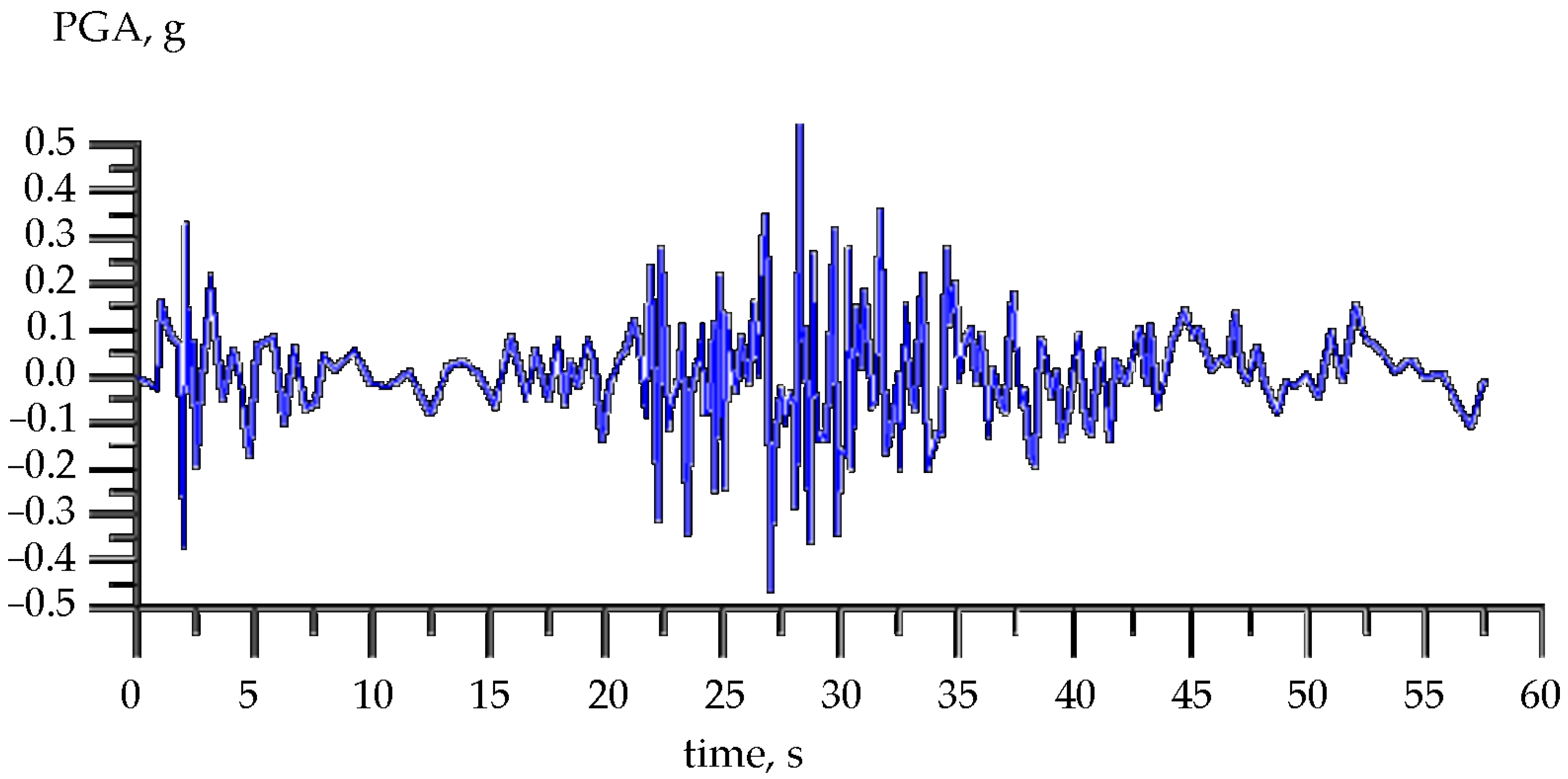
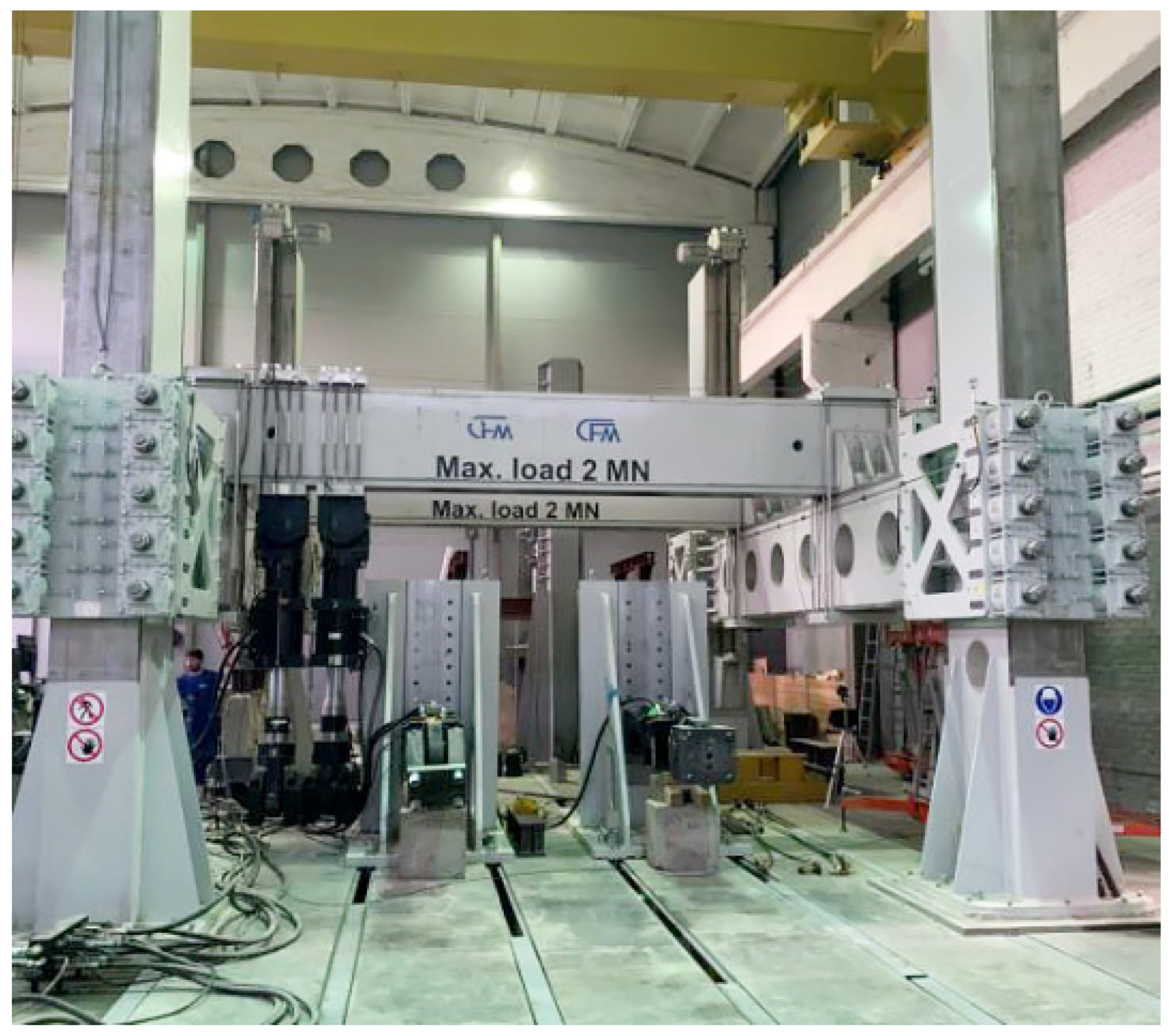

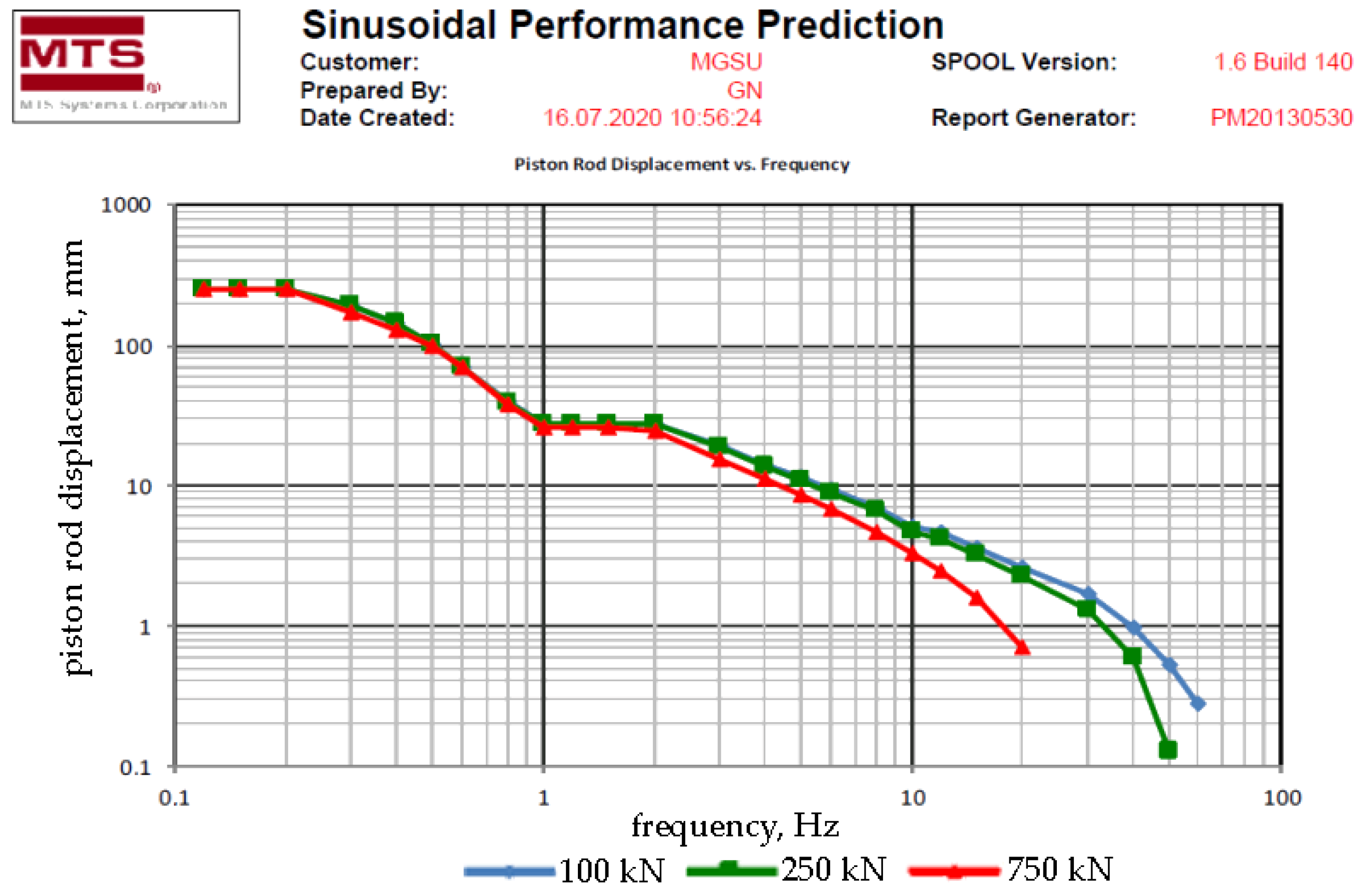
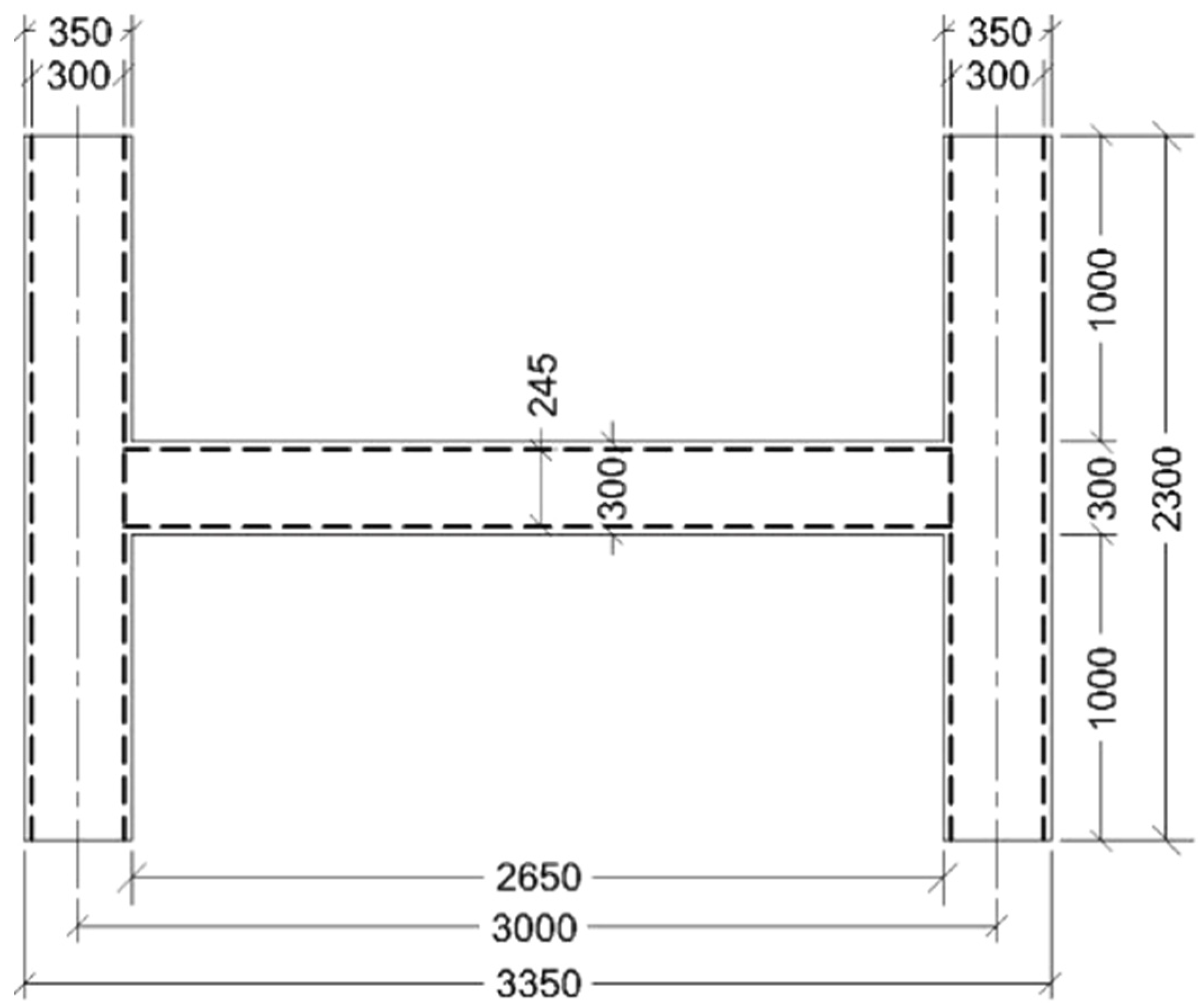
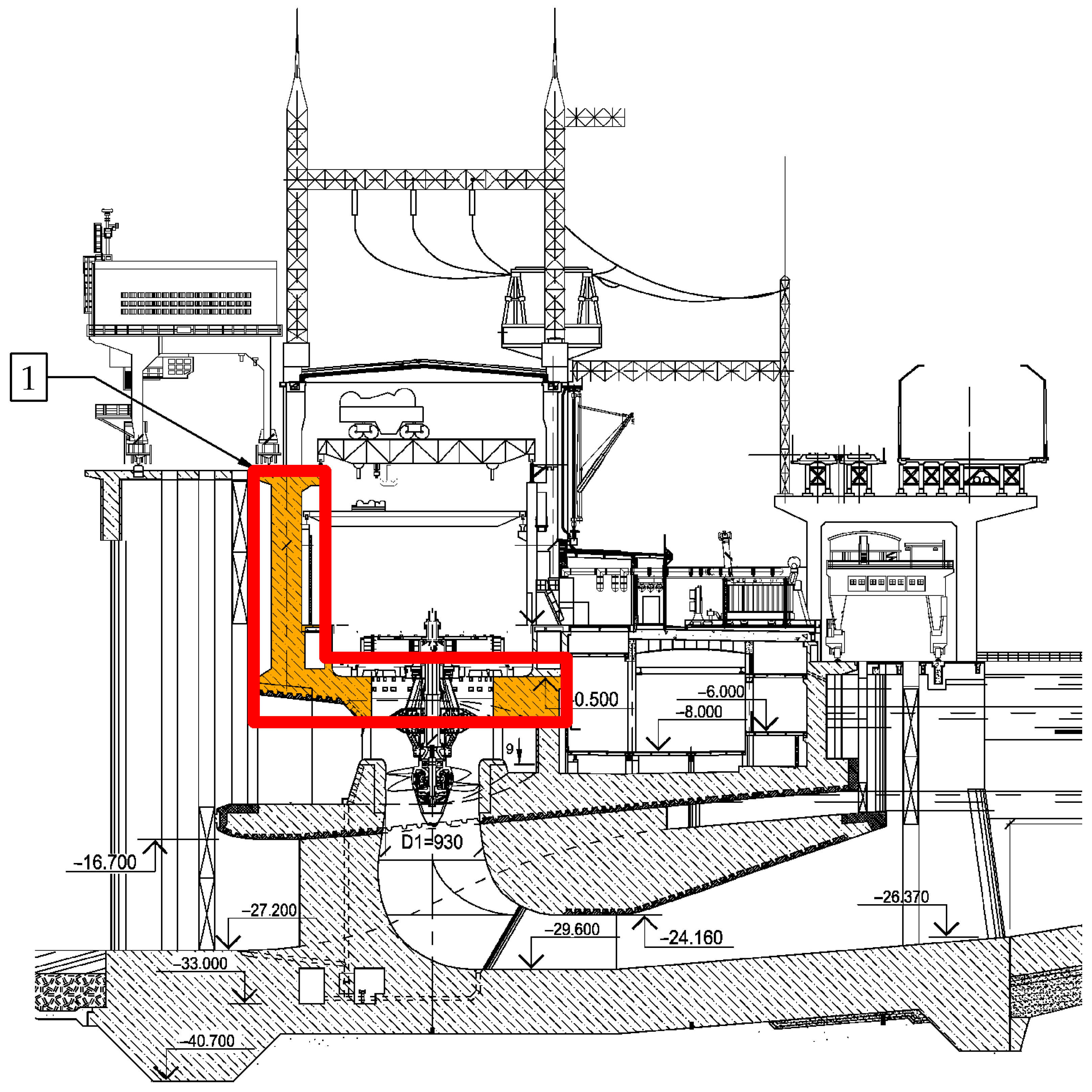
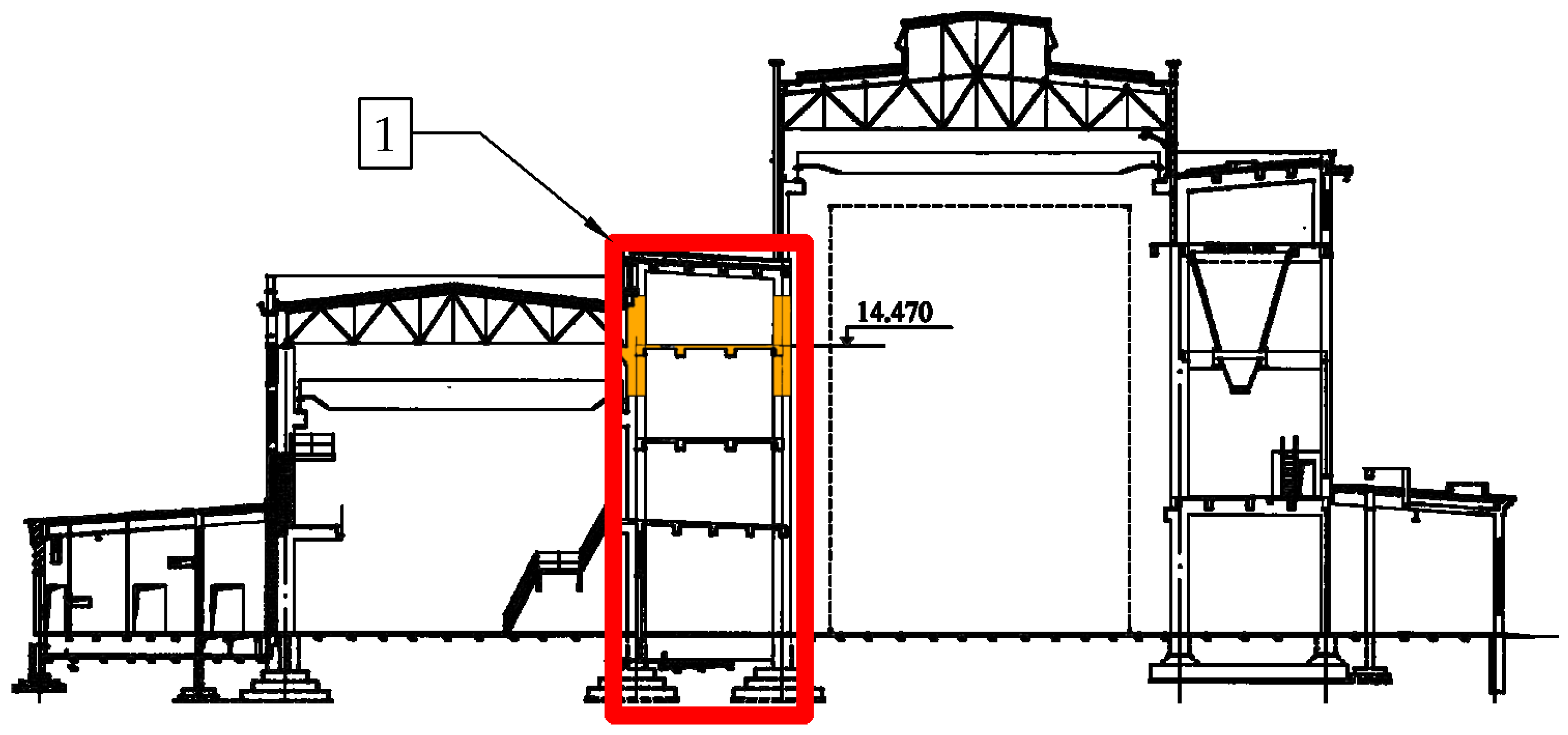
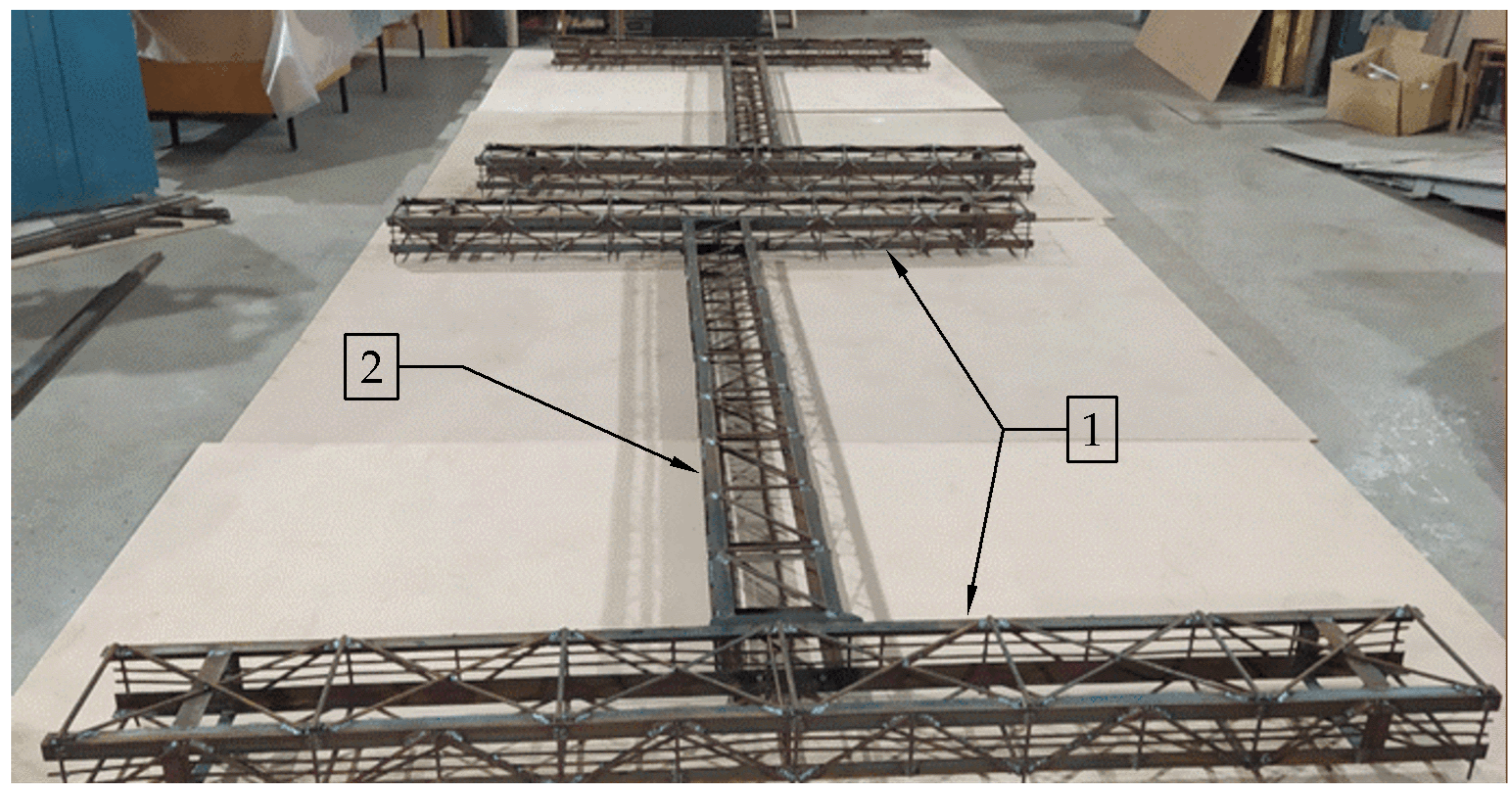
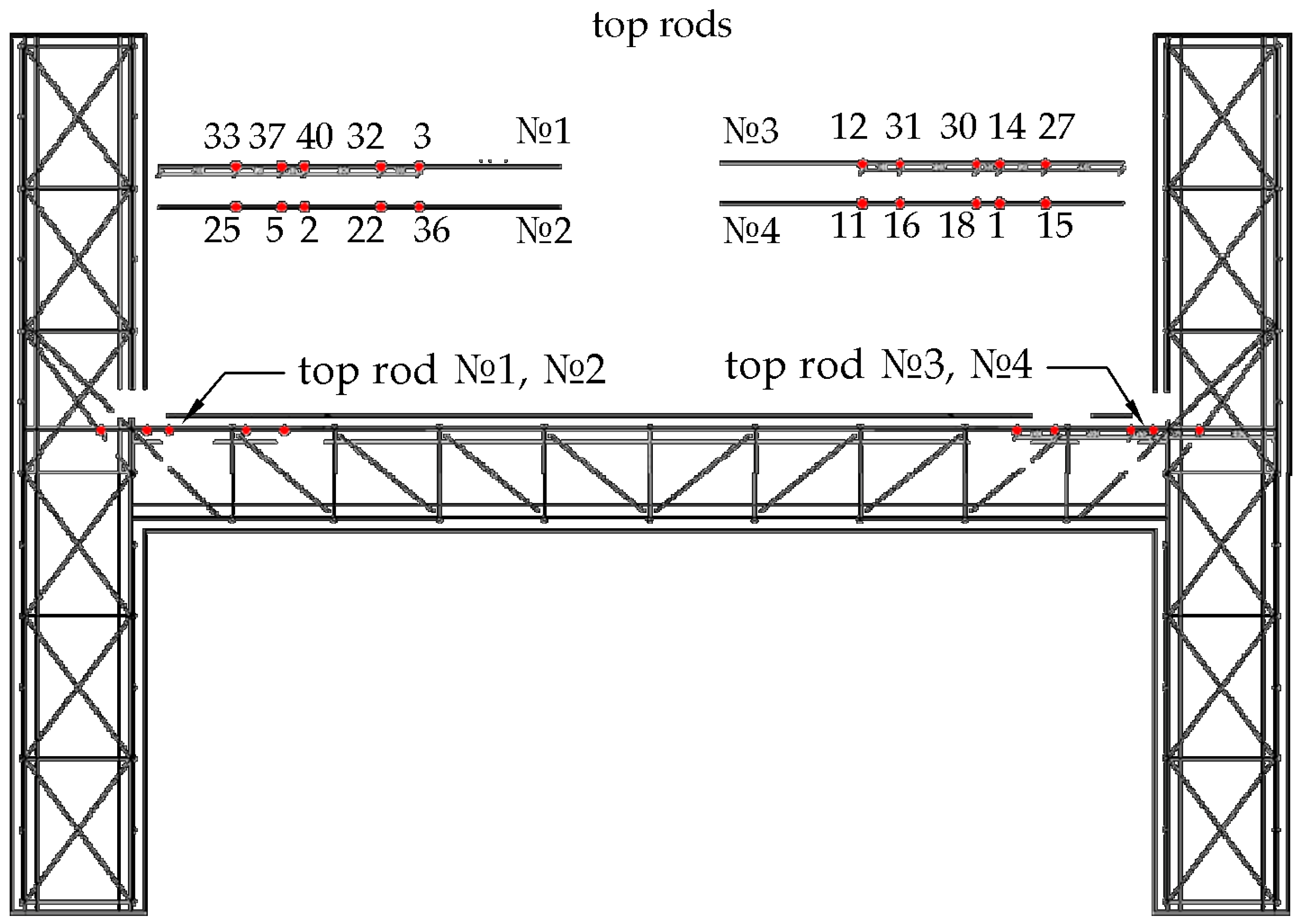

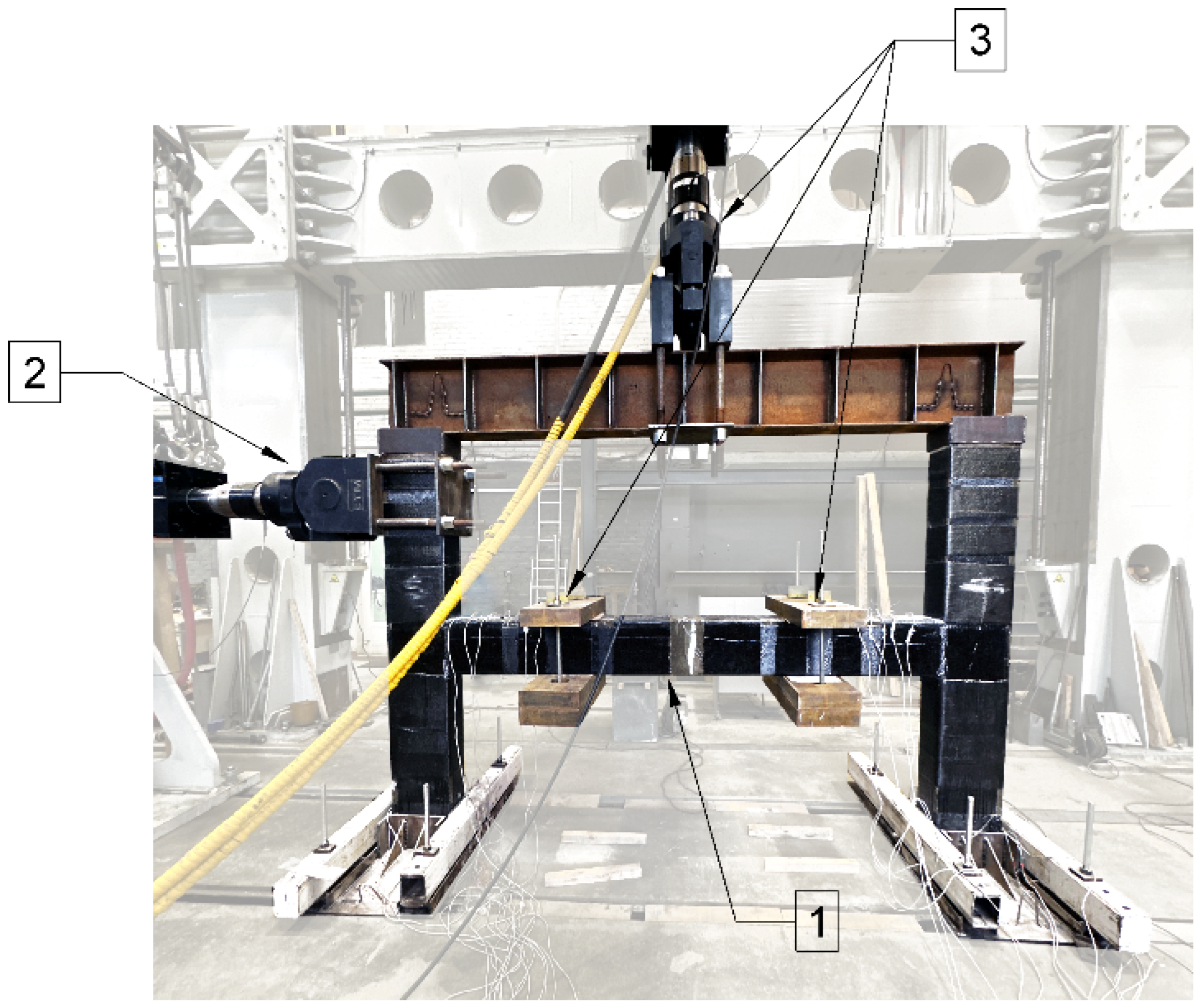
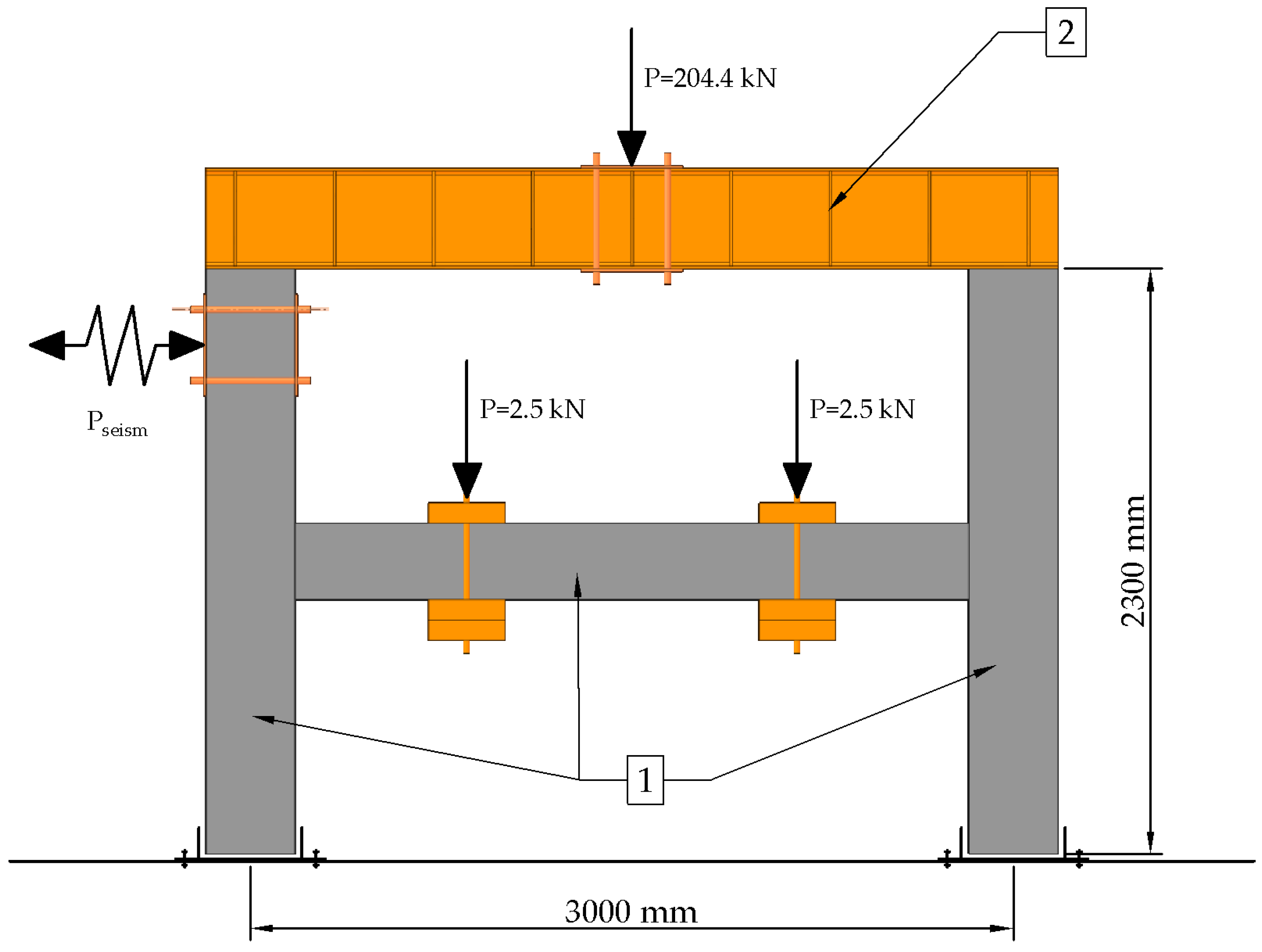

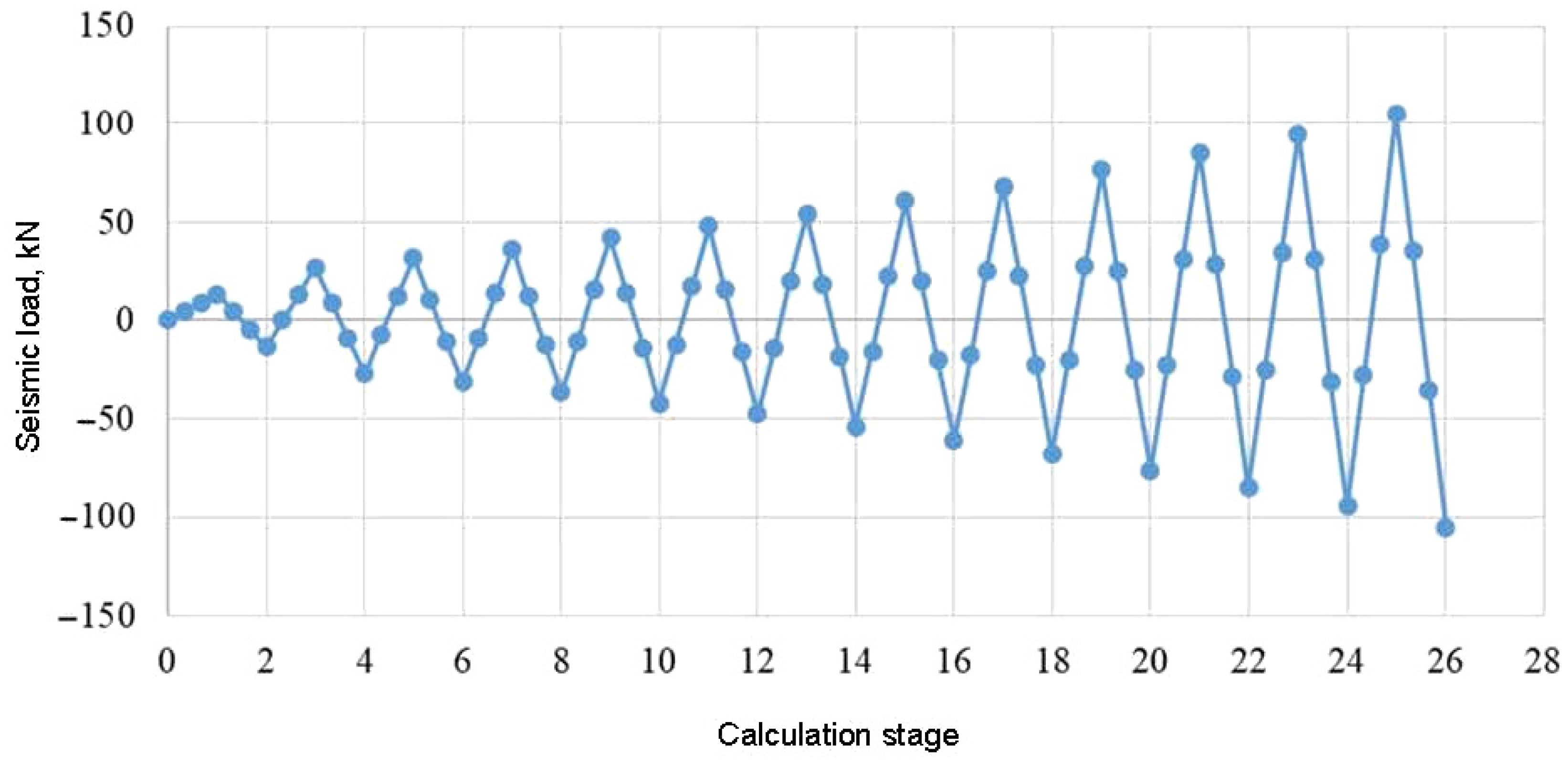
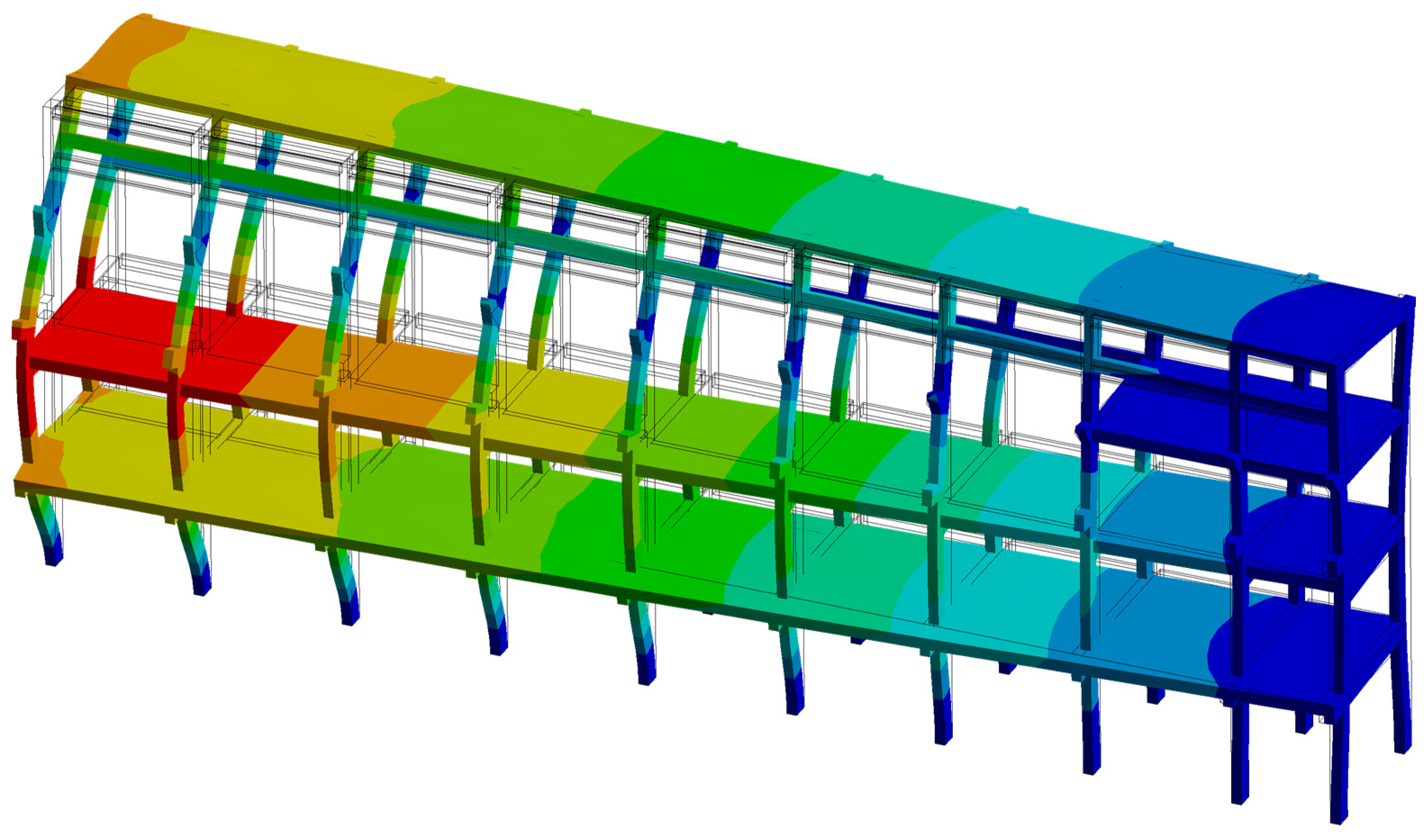
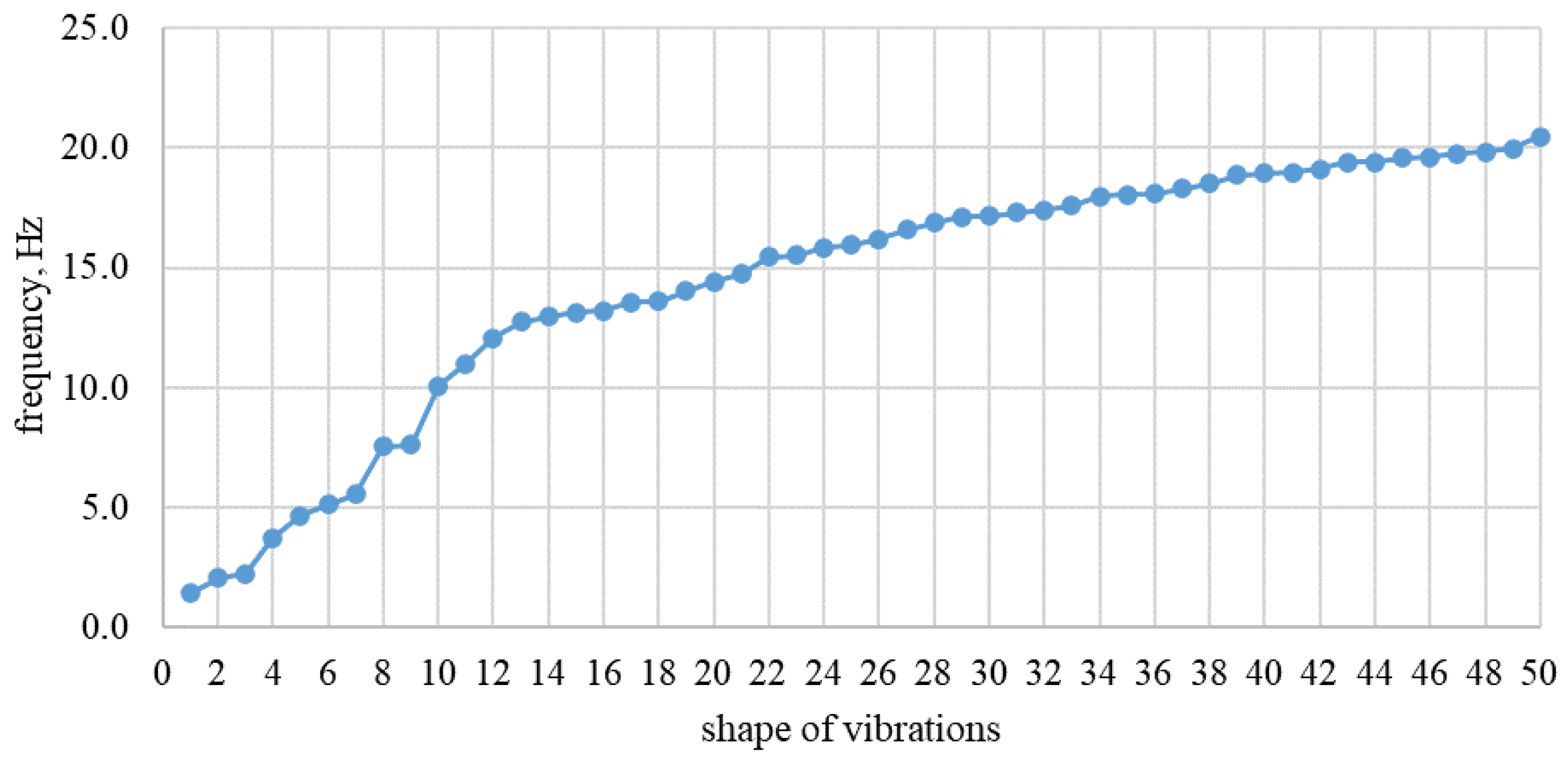
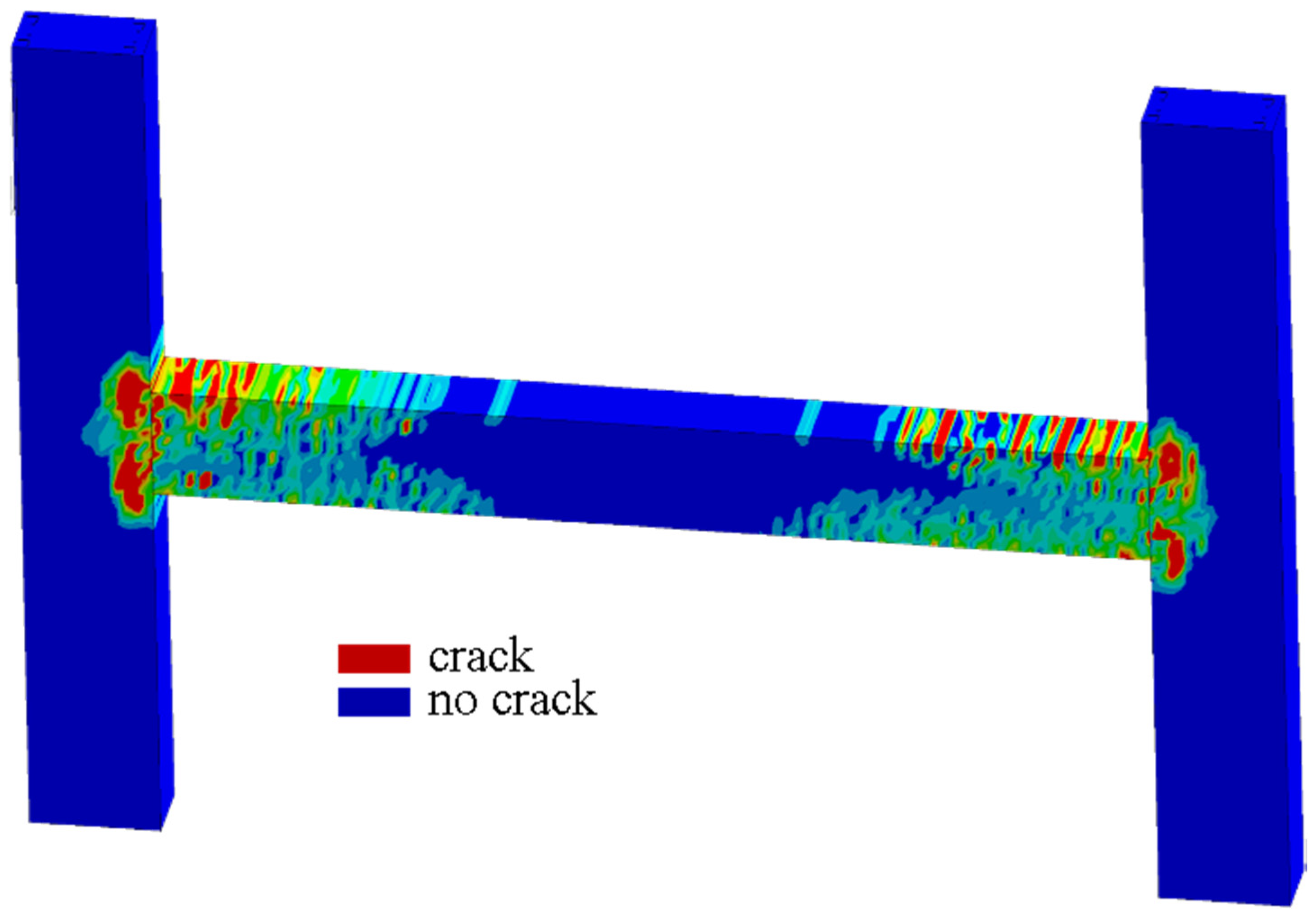
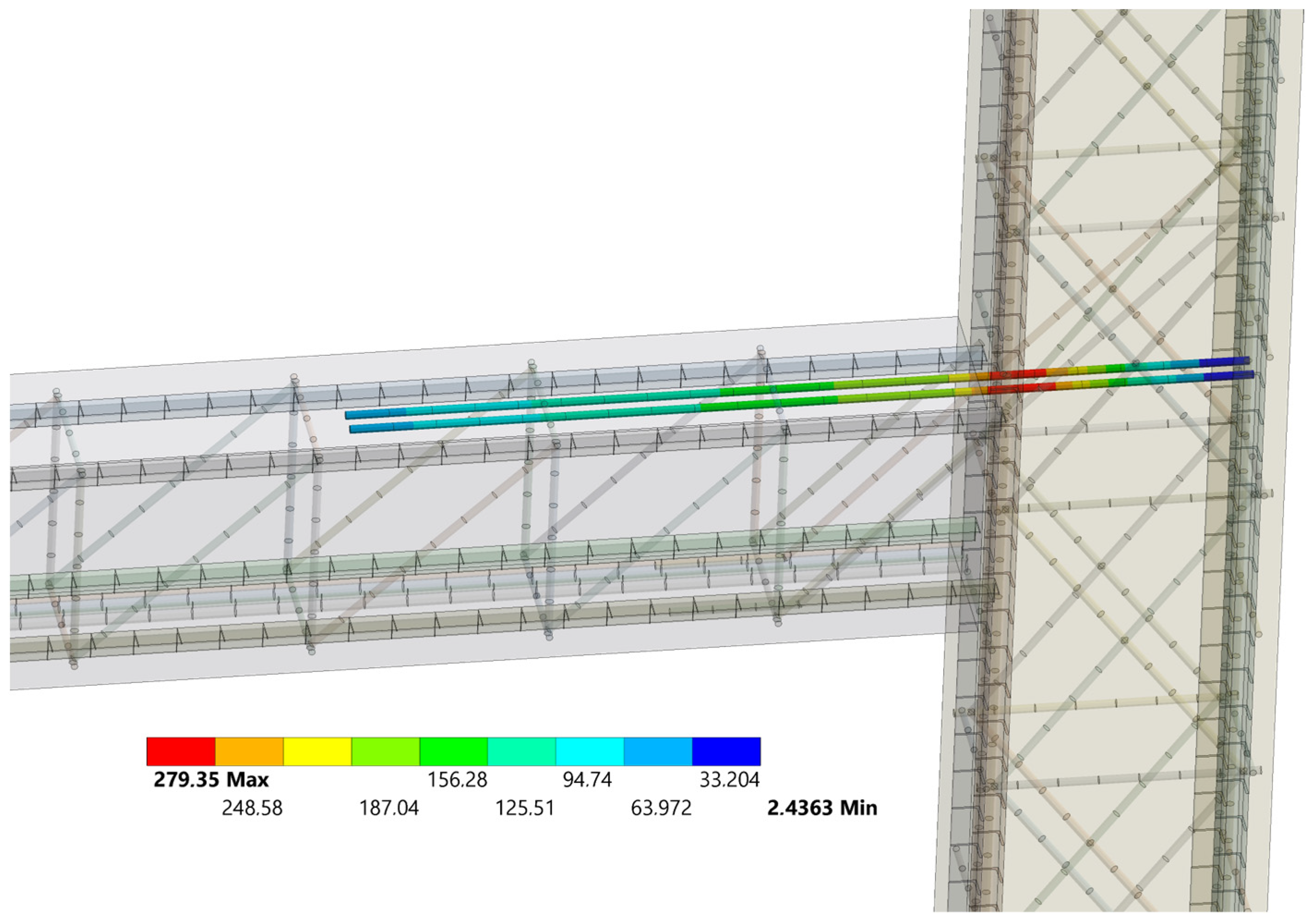

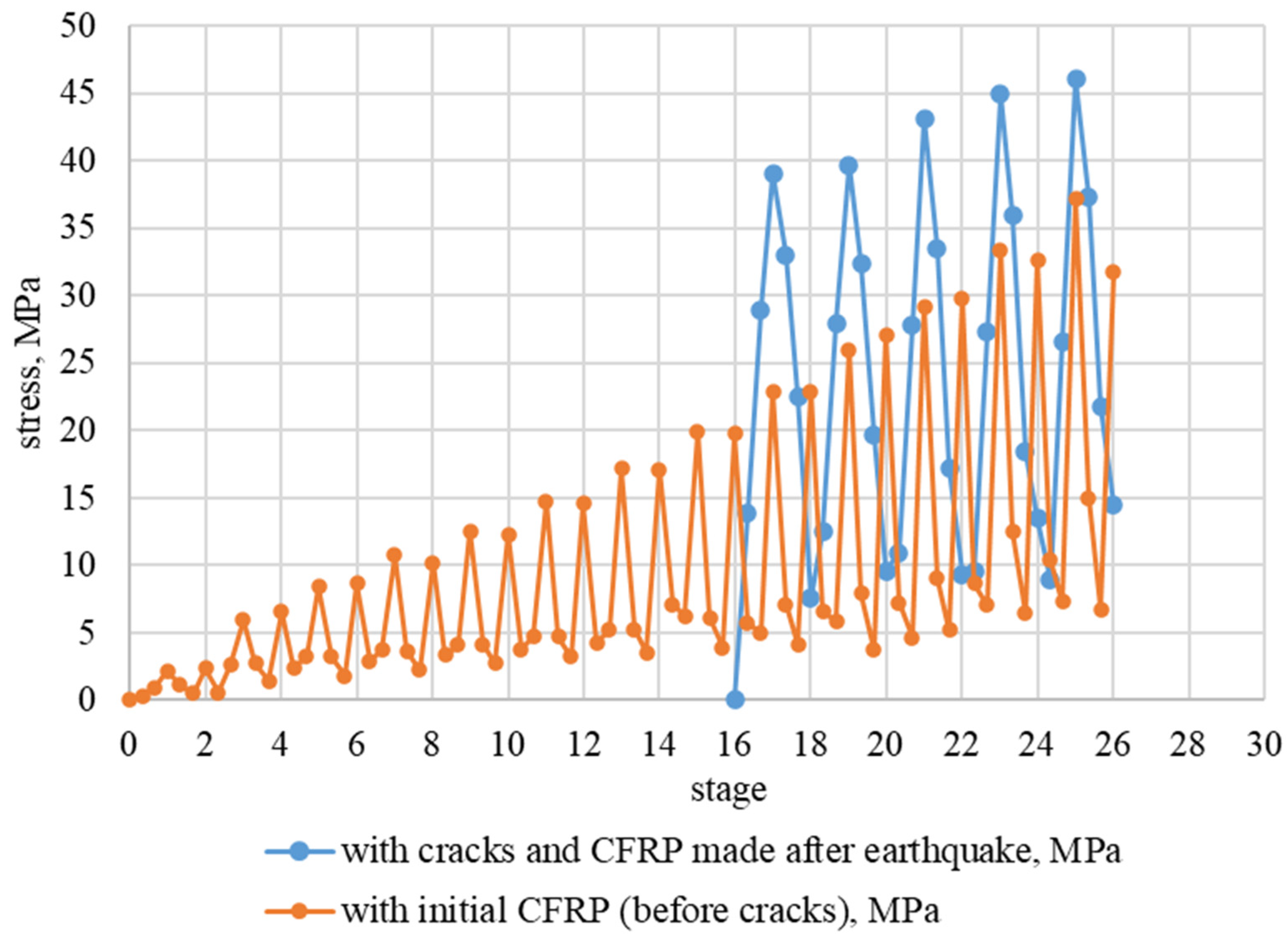
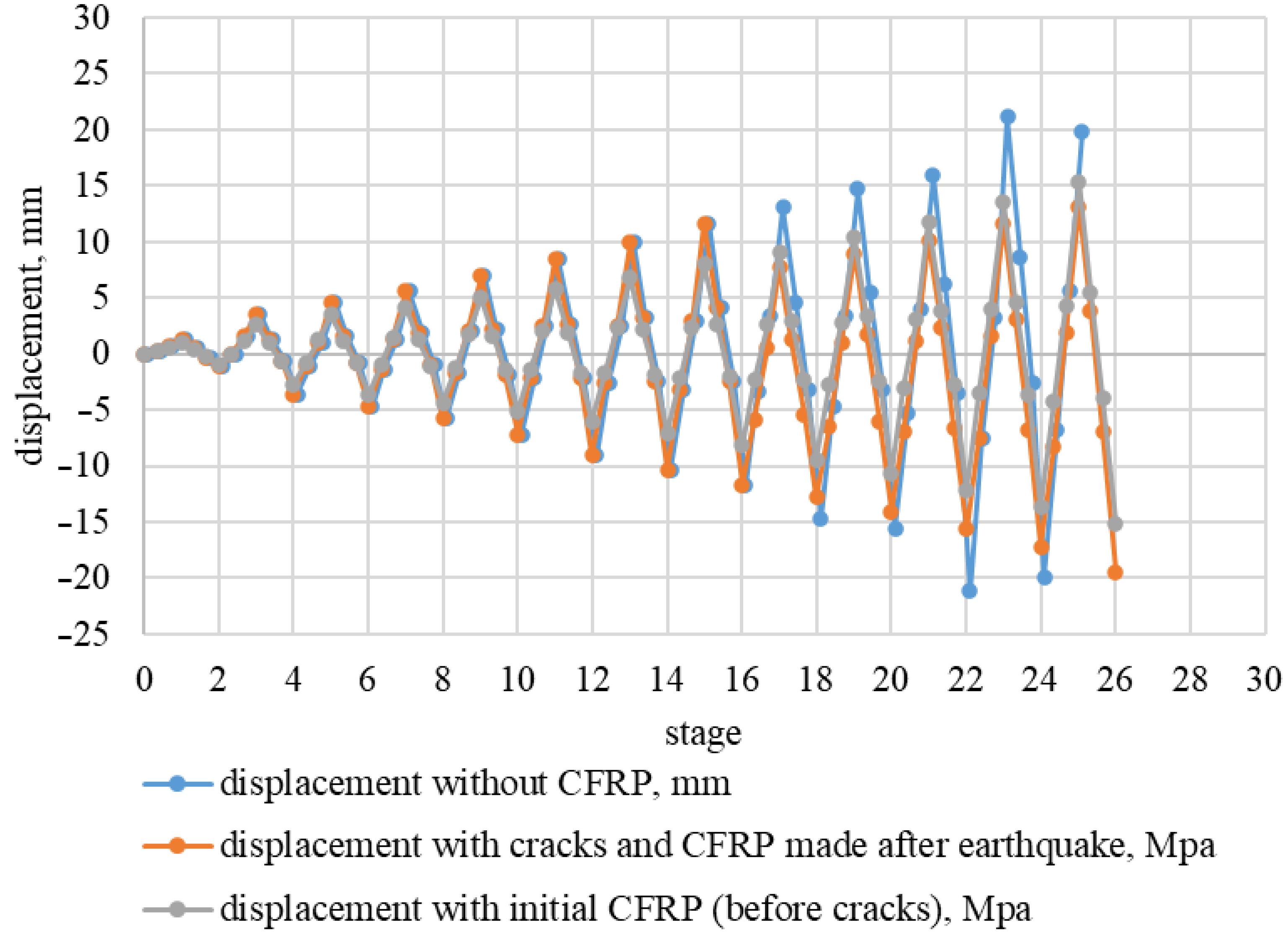

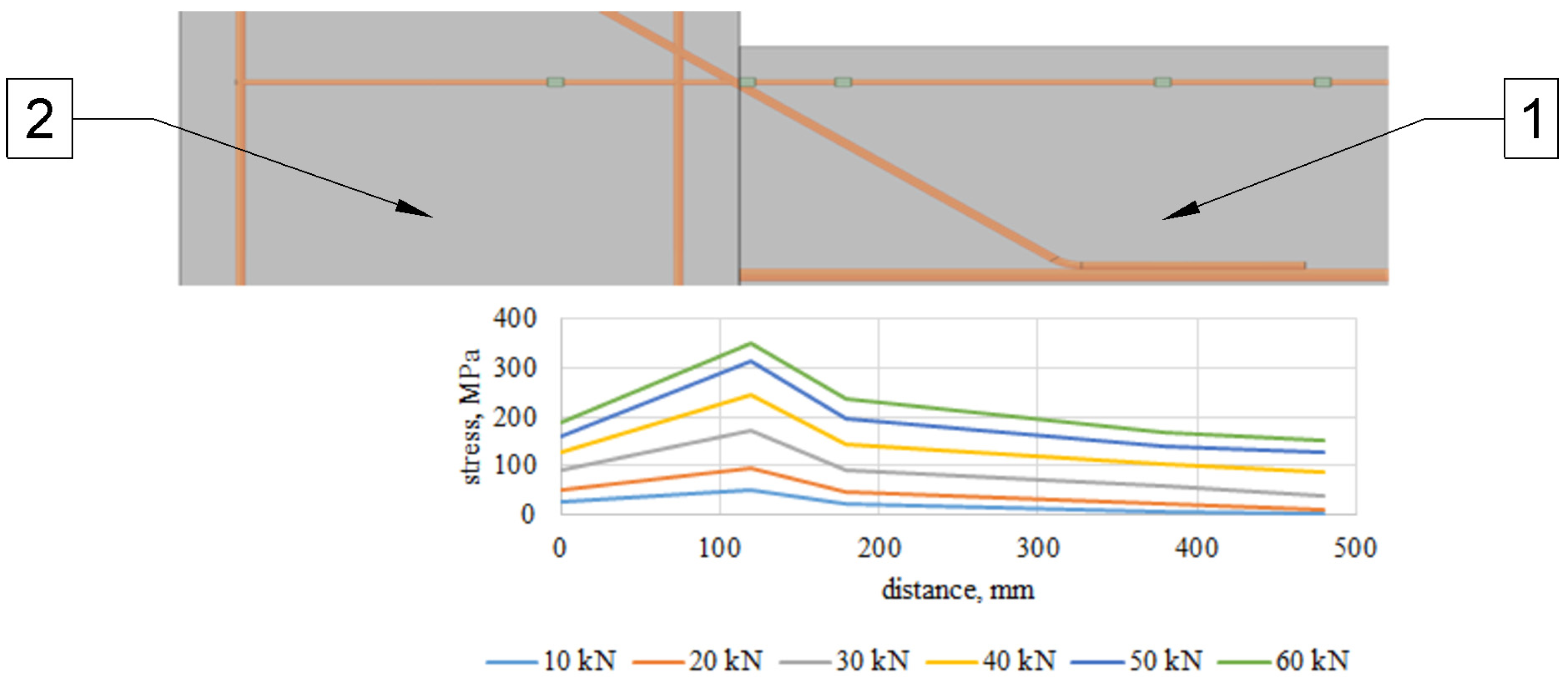
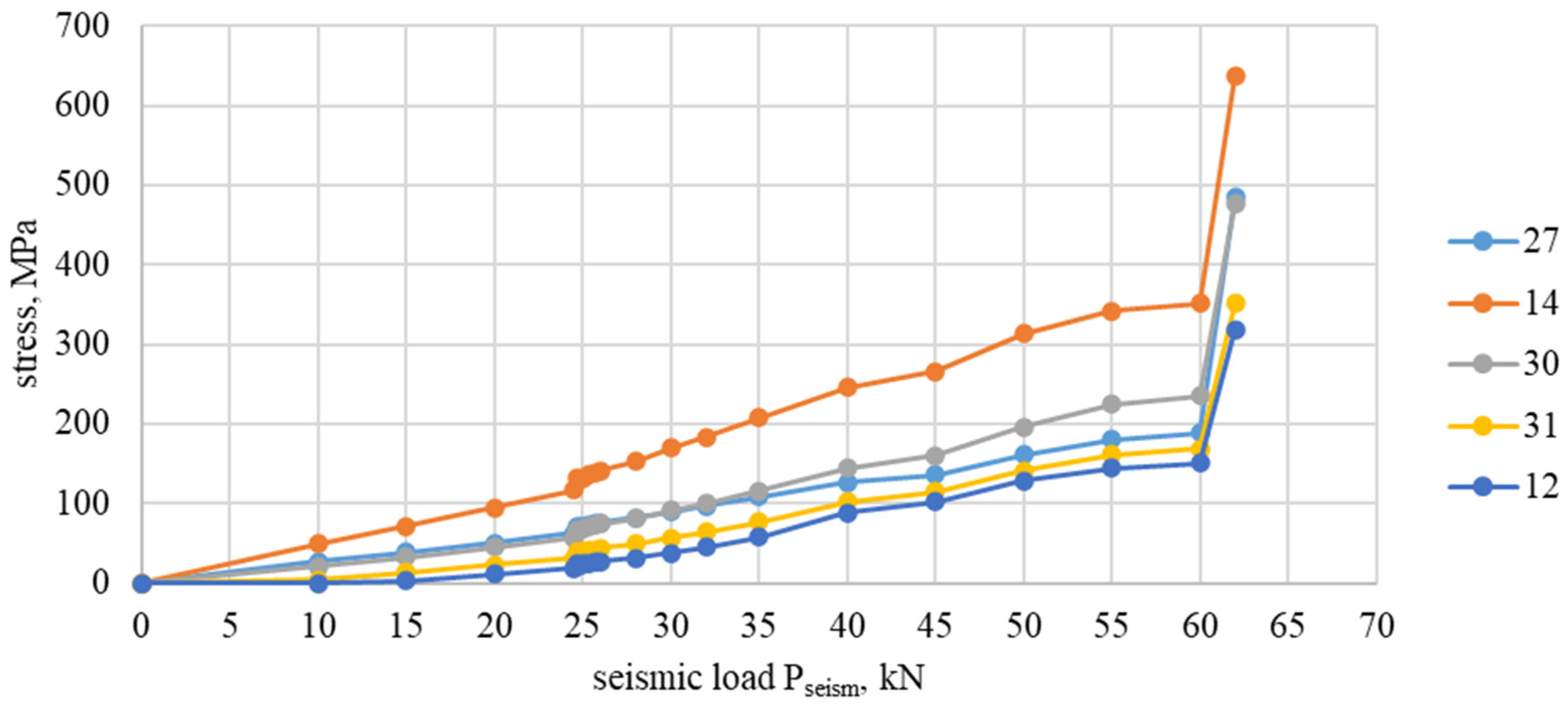
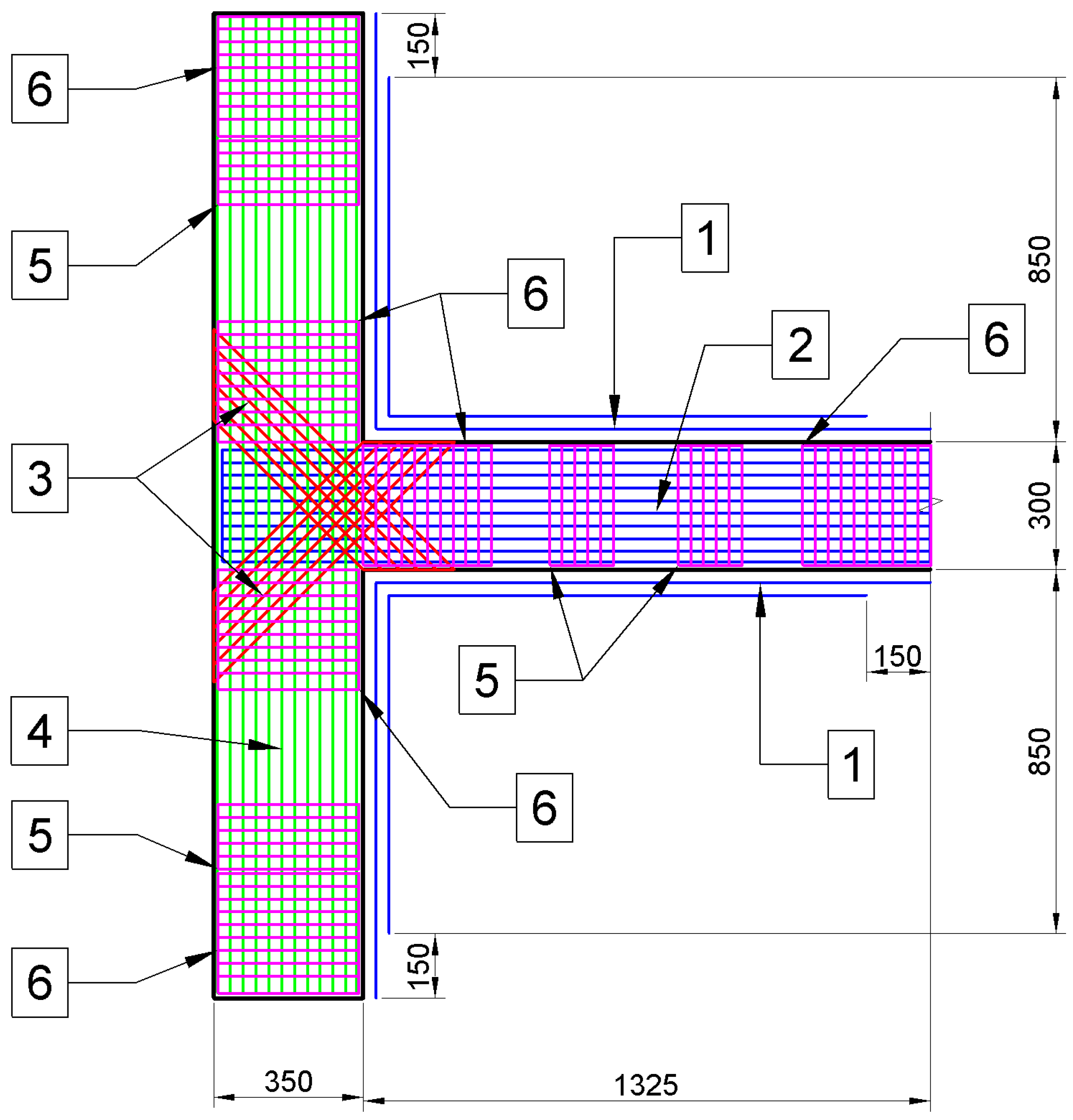
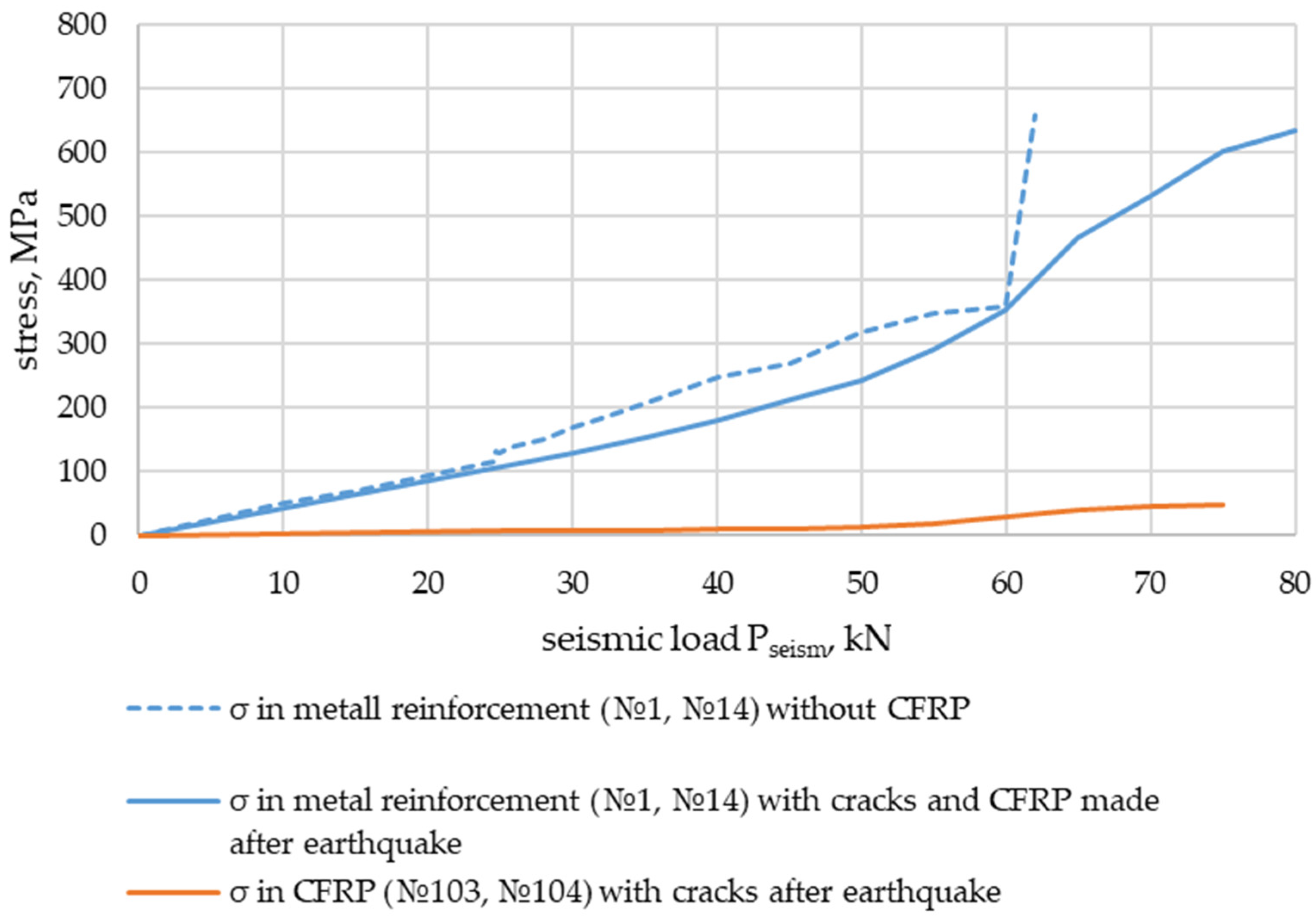
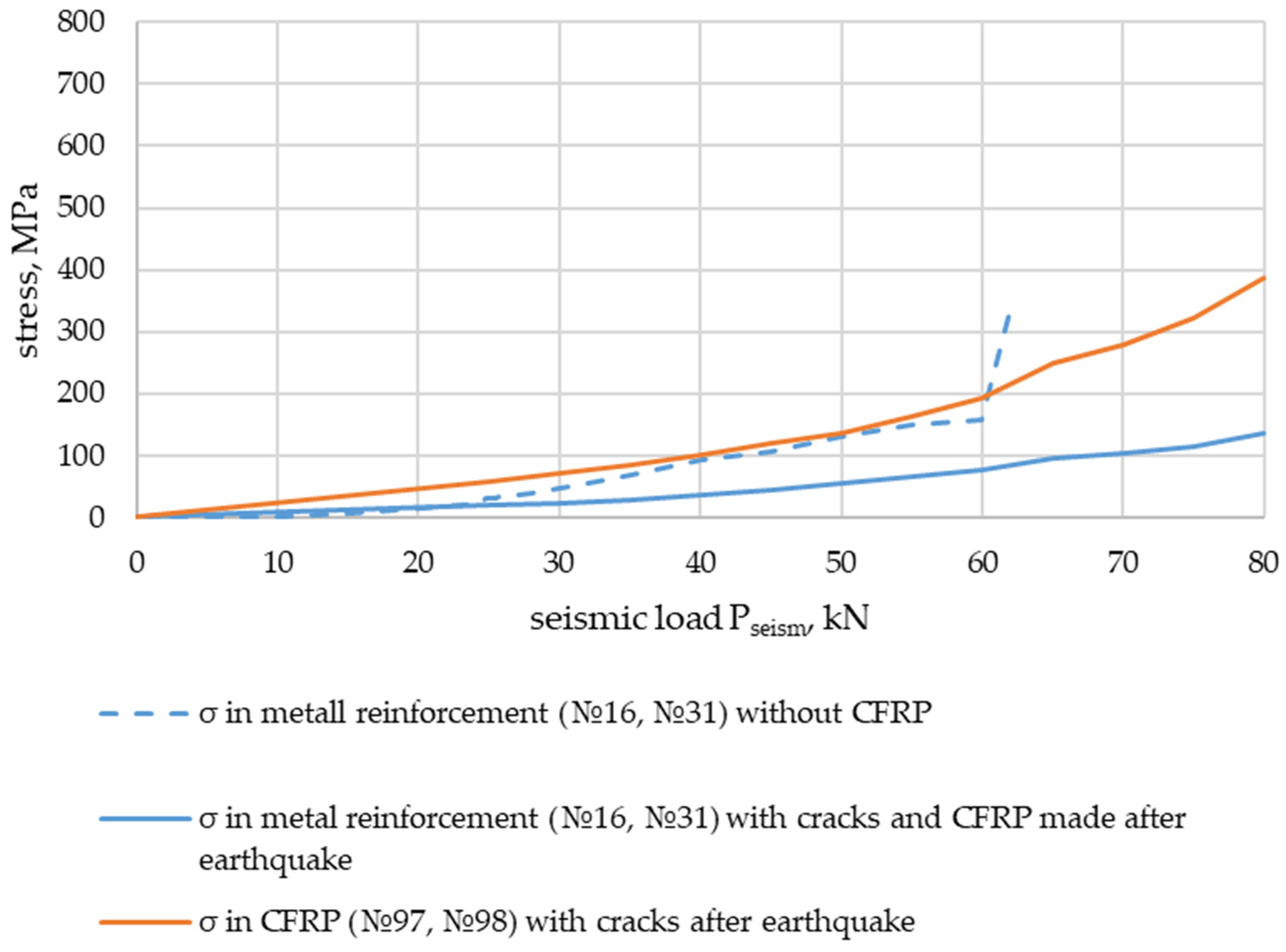



| Repeatability Period | Peak Acceleration (PGA), g | Spectral Accelerations | Magnitude (MSK-64) | ||
|---|---|---|---|---|---|
| SA (T = 0.2 s), g | SA (T = 0.5 s), g | SA (T = 1.0 s), g | |||
| 500 years | 0.096 | 0.222 | 0.129 | 0.064 | 6.9 |
| 1000 years | 0.146 | 0.339 | 0.197 | 0.101 | 7.5 |
| 5000 years | 0.310 | 0.730 | 0.434 | 0.233 | 8.6 |
Disclaimer/Publisher’s Note: The statements, opinions and data contained in all publications are solely those of the individual author(s) and contributor(s) and not of MDPI and/or the editor(s). MDPI and/or the editor(s) disclaim responsibility for any injury to people or property resulting from any ideas, methods, instructions or products referred to in the content. |
© 2024 by the authors. Licensee MDPI, Basel, Switzerland. This article is an open access article distributed under the terms and conditions of the Creative Commons Attribution (CC BY) license (https://creativecommons.org/licenses/by/4.0/).
Share and Cite
Rubin, O.; Bellendir, E.; Antonov, A.; Baklykov, I. Computational and Experimental Substantiation of Strengthening Reinforced Concrete Structures with Composite Materials of Power Plants under Seismic Action. Buildings 2024, 14, 1971. https://doi.org/10.3390/buildings14071971
Rubin O, Bellendir E, Antonov A, Baklykov I. Computational and Experimental Substantiation of Strengthening Reinforced Concrete Structures with Composite Materials of Power Plants under Seismic Action. Buildings. 2024; 14(7):1971. https://doi.org/10.3390/buildings14071971
Chicago/Turabian StyleRubin, Oleg, Evgeny Bellendir, Anton Antonov, and Igor Baklykov. 2024. "Computational and Experimental Substantiation of Strengthening Reinforced Concrete Structures with Composite Materials of Power Plants under Seismic Action" Buildings 14, no. 7: 1971. https://doi.org/10.3390/buildings14071971






